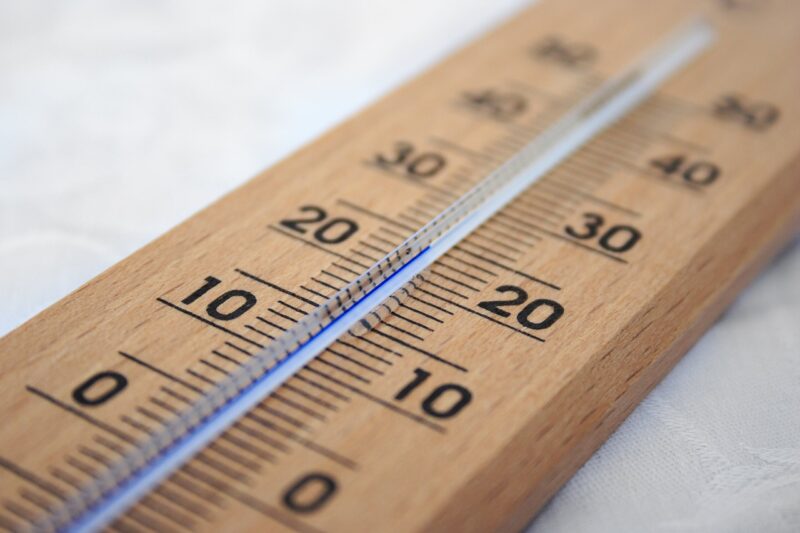Why Different Countries Use Different Units to Measure Temperature
November 12, 2024

Temperature measurement is a fascinating topic that touches upon science, cultural differences, and history. While people around the world experience temperature changes similarly, the units they use to express these changes can vary dramatically. In this article, we’ll explore the reasons why different countries utilize different units to measure temperature, specifically focusing on the Celsius, Fahrenheit, and Kelvin scales.
1. The Basics of Temperature Measurement
Temperature is a measure of how hot or cold an environment or object is. Understanding temperature allows us to engage in essential activities such as cooking, dressing appropriately, and regulating climate control in our homes and workplaces.
There are several scales used worldwide to measure temperature, with the three most common being:
- Celsius (°C): Widely used in most parts of the world, Celsius is based on the properties of water, being defined as the temperature at which water freezes (0°C) and boils (100°C) at standard atmospheric pressure.
- Fahrenheit (°F): Primarily used in the United States, this scale sets the freezing point of water at 32°F and its boiling point at 212°F.
- Kelvin (K): The Kelvin scale is used primarily in scientific contexts. It starts at absolute zero, the theoretical point at which particles have minimum thermal motion, making it the most universal scale. Water freezes at 273.15 K and boils at 373.15 K.
The differences in these scales stem from historical contexts, applications, and the preference of societies.
2. Historical Context: The Development of Temperature Scales
The origins of temperature measurement date back several centuries. Early thermometers used a variety of materials and designs, leading to inconsistencies in temperature readings.
– Celsius: Developed by Swedish astronomer Anders Celsius in 1742, the Celsius scale was designed with the freezing and boiling points of water as its reference. Its straightforward relation to physical phenomena made it popular, especially in scientific communities.
– Fahrenheit: German physicist Daniel Gabriel Fahrenheit introduced his temperature scale in 1724. He based his scale on a mix of fixed points, including the temperature of a brine solution and the average human body temperature. As a result, Fahrenheit became particularly prominent in English-speaking countries, especially the United States.
– Kelvin: Introduced by Lord Kelvin in the mid-19th century, this scale was designed for scientific use, especially in thermodynamics. Its absolute zero starting point allows for a consistent and absolute measurement of temperature.
This historical context explains why some regions adopted specific temperature scales as scientific advancements occurred.
3. Cultural Factors and Education Systems
Cultural norms heavily influence which temperature scales people use. In many countries, educational systems introduce Celsius as the primary scale, promoting familiarity from an early age. Conversely, in the U.S., Fahrenheit is deeply embedded in everyday language, with weather forecasts, cooking temperatures, and educational content predominantly using Fahrenheit.
Cultural factors also extend to how temperature is perceived:
- Familiarity: People learn and adapt to the temperature system used in their society. In the U.S., Fahrenheit might feel more intuitive to the average person for everyday measurements, as the numbers typically fall within a range that feels relatable to day-to-day experiences.
- Practical Application: Fahrenheit scales are often tied to household activities, such as cooking and baking, which gives Americans a practical reason to stick to this scale over instilling Celsius in schools.
These cultural connections demonstrate how entrenched systems can influence individuals’ understanding of temperature measurement.
4. Scientific Implications: Using the Kelvin Scale
In scientific research, precision in temperature measurement is crucial. The Kelvin scale is preferred because it allows researchers to use absolute temperatures, making calculations more straightforward.
Using Kelvin is especially important in fields like physics and chemistry:
- Thermodynamics: Many equations in thermodynamics require absolute temperatures. Using Celsius or Fahrenheit can introduce confusion and inaccuracies into important calculations.
- Global Standardization: Scientists worldwide are increasingly prioritizing the Kelvin scale. This shared understanding ensures better collaboration and efficiency in international research efforts.
The Kelvin scale exemplifies how scientific communities need consistent metrics for collaboration and innovation.
5. The Role of Technology in Temperature Measurement
In today’s technology-driven world, automated systems and digital applications are bridge builders, facilitating the conversion of temperature readings among scales. Weather apps, smart home devices, and scientific instruments can often toggle between Celsius, Fahrenheit, and Kelvin.
This advancement underscores how individuals can access knowledge across different systems without getting confused. However, while technology provides conversion tools, it doesn’t erase the cultural and historical contexts that influence which scales remain prevalent.
For instance, in cooking, recipes in the U.S. often list temperatures in Fahrenheit, whereas many European recipes use Celsius. The science behind the food remains the same, but the way we engage with culinary practices widely varies between cultures.
Conclusion
The differences in temperature measurement across countries illuminate how science, culture, and history converge. While Celsius, Fahrenheit, and Kelvin each have their unique applications and significance, the broader narrative is about how societies evolve and adopt specific standards based on their environment, experiences, and scientific advancements.
Understanding these differences not only satiates intellectual curiosity but also enhances appreciation for the scientific and cultural complexities of our world. Whether you’re a scientist delving into research or just someone checking the weather, the unit you choose shapes your perception of temperature in profound ways. Next time you discuss or measure temperature, consider the scales at play and the stories they tell about our diverse global society.








